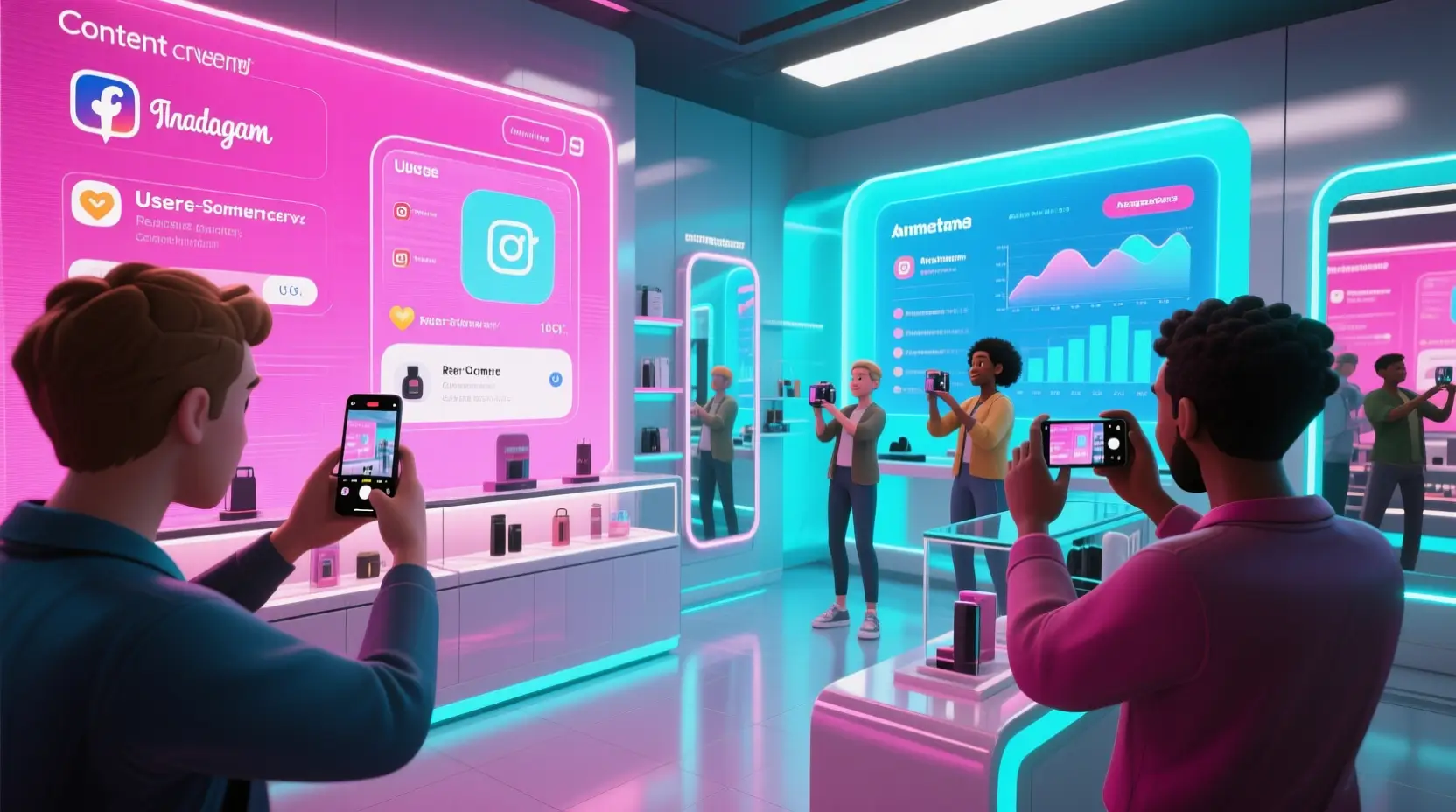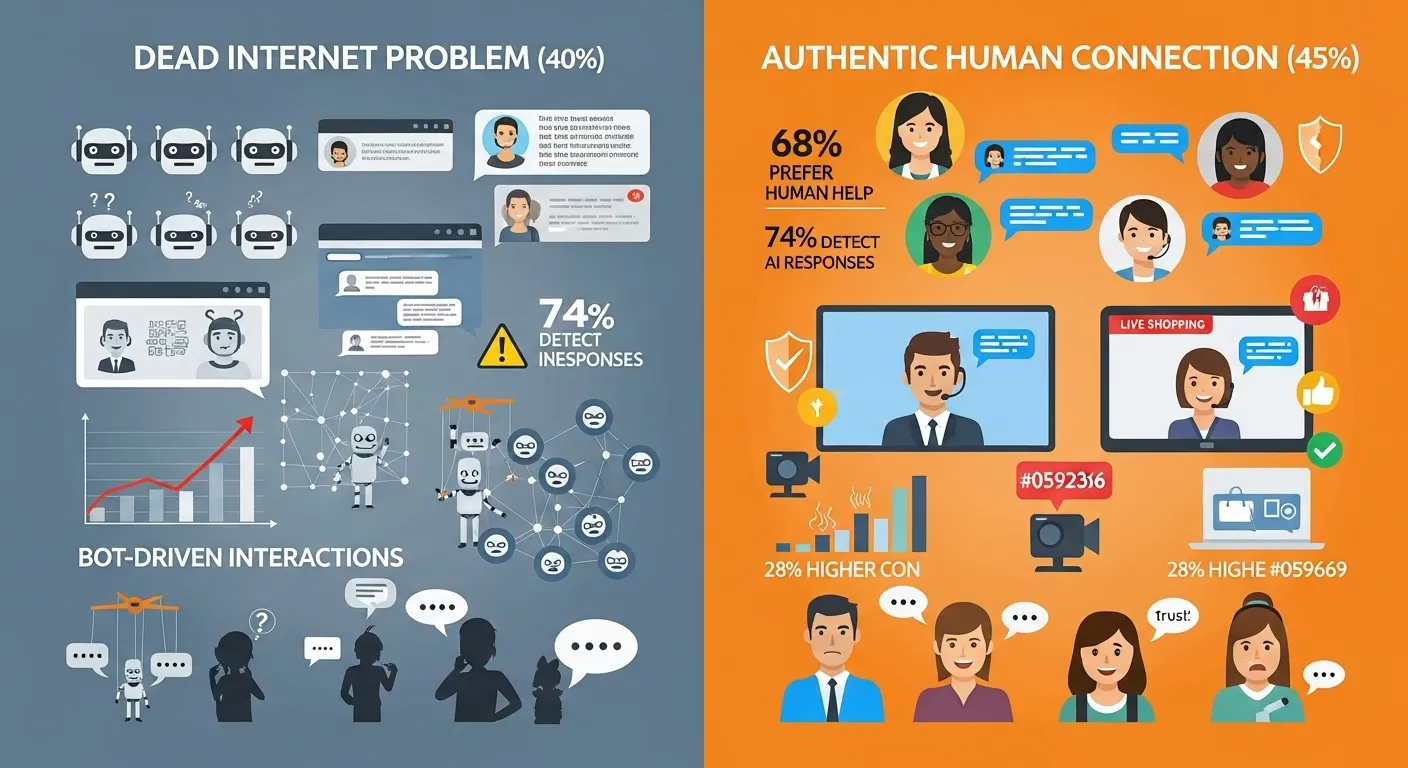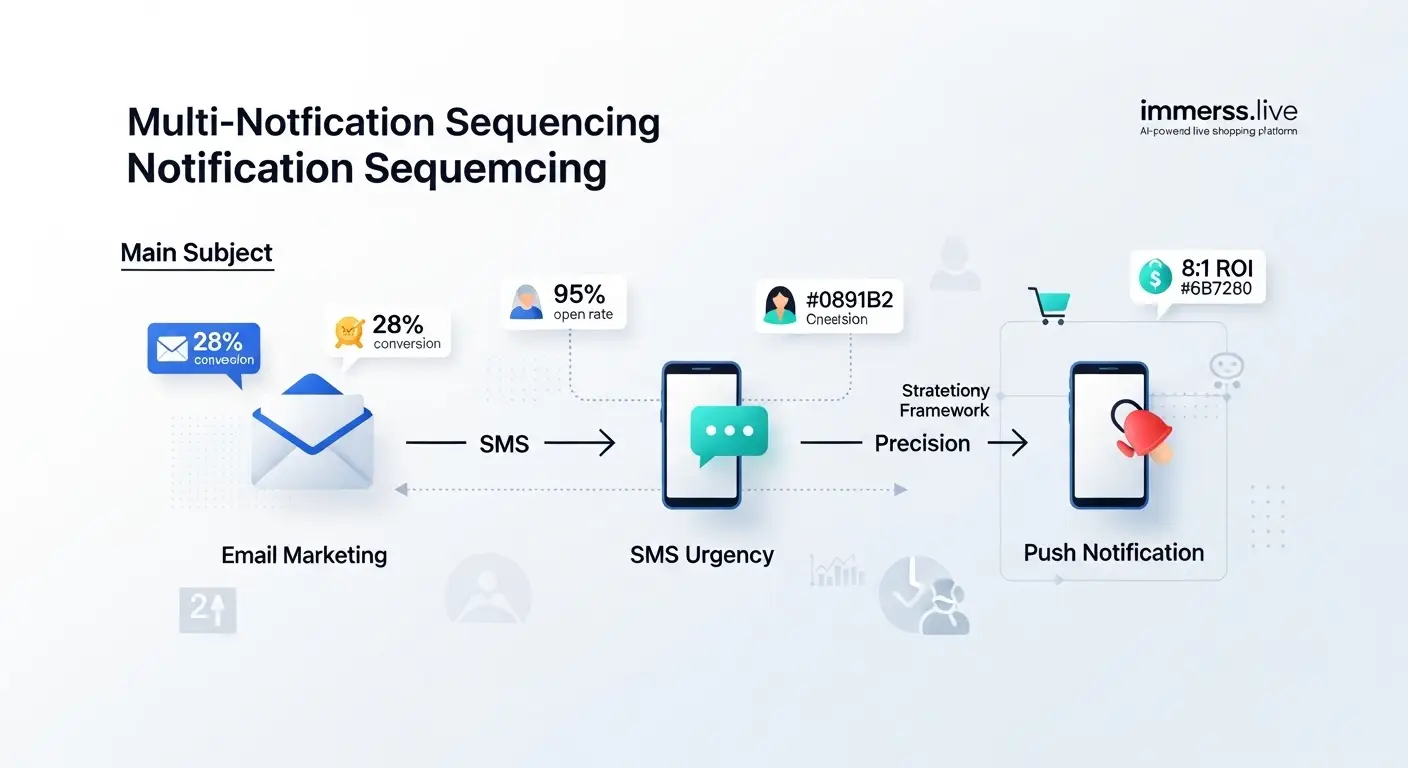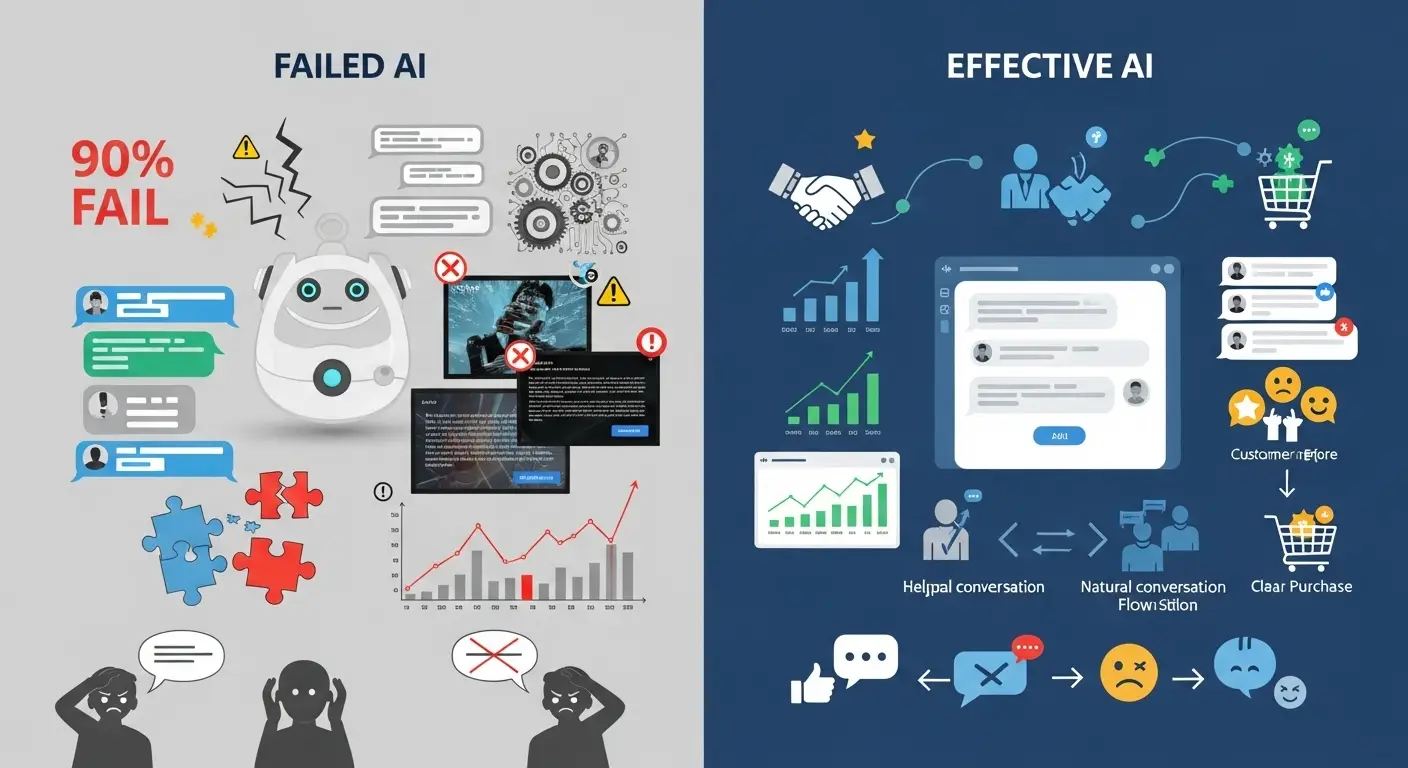The landscape of ecommerce visual content is undergoing a seismic shift. A recent discussion on r/ecommerce perfectly encapsulates what thousands of online retailers are experiencing: the mounting pressure to create compelling visual content that drives engagement and conversions, while lacking the internal resources or creative expertise to do so effectively.
The post, from a solopreneur struggling with content creation, highlights a critical industry pain point: “I simply don’t have the creative eye to come up with nice visuals. I don’t have the skills, or the patience.” This candid admission represents the reality for countless ecommerce businesses, from solo entrepreneurs to mid-sized companies, who find themselves caught between the necessity of high-quality visual content and the practical limitations of in-house production.
This challenge has catalyzed the rise of User-Generated Content (UGC) and content creator partnerships as not just a nice-to-have marketing tactic, but an essential business strategy. The data supports this shift: brands utilizing UGC see a 28% higher engagement rate compared to those relying solely on professionally produced content, while creator-generated content drives 6.9x higher engagement than brand-generated content on social platforms.
The Content Creation Crisis Facing Modern Ecommerce
The modern ecommerce environment demands a constant stream of fresh, engaging visual content across multiple channels. Social media platforms, paid advertising campaigns, email marketing, and website optimization all require unique visual assets that resonate with target audiences. This content hunger has created what industry experts are calling the “content creation crisis.”
Traditional approaches to content creation are proving inadequate for several reasons. First, the cost of professional photography and videography for every product variant, seasonal campaign, and platform-specific requirement quickly becomes prohibitive. A single professional photoshoot can cost between $2,000 to $10,000, and that’s before considering the ongoing need for fresh content to maintain audience engagement.
Second, the speed of content consumption has accelerated dramatically. What once might have been a quarterly content refresh cycle has compressed to weekly or even daily updates. The average social media user consumes over 2.5 hours of content daily, creating an insatiable demand for new visual material that traditional production methods simply cannot meet.
Third, authenticity has become paramount. Modern consumers, particularly millennials and Gen Z shoppers who represent the largest segment of online buyers, increasingly favor content that feels genuine and relatable over polished, corporate-style imagery. This preference has created a fundamental mismatch between traditional brand content and consumer expectations.
The Reddit discussion illuminates these challenges perfectly. The original poster’s frustration with content creation reflects a broader industry struggle: how do you scale authentic, engaging visual content without breaking the bank or sacrificing quality?
Understanding the UGC and Creator Economy Landscape
User-Generated Content and content creator partnerships represent two distinct but complementary approaches to solving the content creation challenge. UGC typically involves customers and brand enthusiasts creating content organically or through incentivized campaigns, while content creator partnerships involve formal collaborations with influencers, photographers, and content specialists.
The creator economy has exploded from a $1.3 billion market in 2019 to over $16 billion in 2024, with projections suggesting it will reach $24 billion by 2026. This growth reflects not just the popularity of social media platforms, but the proven effectiveness of creator-generated content in driving business results.
For ecommerce specifically, creator partnerships offer several distinct advantages. Creators bring established audiences who trust their recommendations, creative expertise that many brands lack internally, and the ability to produce content at scale without the overhead of full-time creative teams. Additionally, creators understand platform-specific content requirements and audience preferences in ways that traditional marketing teams often struggle to match.
The most successful ecommerce brands are moving beyond one-off influencer posts toward long-term creator partnerships. These relationships allow for deeper brand integration, more authentic content development, and better return on investment through sustained audience engagement.
However, the Reddit post raises important questions about implementation: How many creators should you work with? What should you pay? How much creative control should you maintain? These operational considerations are crucial for success but often overlooked in discussions about creator partnerships.
Strategic Framework for UGC and Creator Partnerships
Developing an effective UGC and creator strategy requires a systematic approach that aligns with your brand goals, budget constraints, and operational capabilities. Based on industry best practices and successful case studies, here’s a comprehensive framework for implementation.
Portfolio Approach to Creator Partnerships
Rather than relying on a single creator or attempting to manage dozens of relationships, successful brands typically maintain a portfolio of 3-7 core creator partners with additional project-based collaborations. This approach provides content consistency while maintaining creative diversity.
Tier 1 creators (1-2 partners) should be your brand ambassadors—creators whose audience closely aligns with your target demographic and who can produce high-volume, high-quality content on a monthly retainer basis. These partnerships often involve $2,000-$5,000 monthly investments but generate 15-20 pieces of content per month.
Tier 2 creators (3-5 partners) focus on specific campaigns or seasonal content needs. These project-based relationships typically involve $500-$1,500 per campaign and are ideal for testing new creative approaches or reaching different audience segments.
Tier 3 creators represent emerging talent or micro-influencers who can provide cost-effective content for specific niches or local markets. These partnerships often involve product gifting plus $200-$800 per deliverable.
Content Strategy and Creative Direction
The balance between creative freedom and brand consistency represents one of the most challenging aspects of creator partnerships. The most effective approach involves providing creators with clear brand guidelines, key messaging points, and campaign objectives while allowing flexibility in execution.
Successful brands typically provide creators with a “creative brief” that includes brand voice and tone guidelines, visual style preferences, key product features to highlight, and campaign-specific calls-to-action. However, they avoid overly prescriptive requirements that stifle creativity and authenticity.
The goal is to maintain brand consistency while leveraging each creator’s unique perspective and creative strengths. This approach has proven more effective than highly controlled content production, with creator-generated content maintaining authenticity while achieving brand objectives.
Performance Measurement and Optimization
Measuring the effectiveness of UGC and creator partnerships requires tracking metrics beyond traditional vanity metrics like followers or likes. Successful brands focus on business impact metrics including click-through rates, conversion rates, cost per acquisition, and return on ad spend when creator content is used in paid campaigns.
Advanced tracking involves using unique promo codes, UTM parameters, and pixel-based attribution to understand the customer journey from creator content exposure to purchase. This data enables optimization of creator partnerships and content strategies based on actual business results rather than engagement metrics alone.
The Technology Integration Opportunity
While UGC and creator partnerships address the content creation challenge, they also create new opportunities for technology integration that can amplify results. Smart ecommerce brands are combining creator-generated content with advanced customer engagement technologies to create more personalized, interactive shopping experiences.
The most innovative approaches involve using creator content within conversational commerce platforms that enable real-time customer interaction. When a customer views creator-generated product content, they can immediately connect with sales representatives who can provide additional information, answer questions, and guide the purchase decision.
This integration transforms static creator content into dynamic, interactive experiences that combine the authenticity of creator partnerships with the personalization of direct customer engagement. Brands implementing these integrated approaches are seeing conversion rate improvements of 40-60% compared to traditional content strategies.
The technology also enables more sophisticated creator content optimization. By tracking which creator content generates the most engagement and conversions, brands can provide creators with performance feedback that improves future content quality and effectiveness.
Industry-Specific Implementation Strategies
Different ecommerce verticals require tailored approaches to UGC and creator partnerships based on customer behavior, product characteristics, and purchase decision factors.
Fashion and Apparel
Fashion brands benefit most from creators who can demonstrate product styling, fit, and versatility. The most effective partnerships involve creators producing both aspirational lifestyle content and practical styling guides. Size inclusivity and diverse representation are crucial for building broad audience trust and engagement.
Successful fashion brands typically maintain relationships with creators across different style categories (minimalist, bohemian, streetwear, professional) to appeal to varied customer segments. They also leverage creator content for size and fit guidance, which addresses one of the primary barriers to online apparel purchases.
Beauty and Cosmetics
Beauty brands require creators who can demonstrate product application, compare shades and formulations, and create tutorial content. The most valuable creator partnerships in beauty involve before-and-after demonstrations, color matching guidance, and technique tutorials that provide genuine educational value.
The beauty industry also benefits from creator partnerships that address specific skin types, ages, and concerns. This targeted approach enables brands to reach niche audiences while providing highly relevant content that drives purchase decisions.
Electronics and Technology
Technology products require creators who can effectively explain features, demonstrate use cases, and compare alternatives. The most successful tech creator partnerships involve detailed product reviews, comparison content, and real-world usage scenarios that help customers understand product value.
These partnerships often involve longer-term relationships that allow creators to become genuine product experts who can provide authentic, detailed recommendations based on extended product experience.
Home and Lifestyle
Home goods and lifestyle products benefit from creators who can demonstrate products in real living spaces and show practical applications. The most effective content includes room styling, organization solutions, and seasonal decorating ideas that inspire customers while showcasing products naturally.
Overcoming Common Implementation Challenges
Despite the proven benefits of UGC and creator partnerships, many ecommerce brands struggle with implementation challenges that can undermine results. Understanding and addressing these challenges proactively is essential for success.
Creator Discovery and Vetting
Finding the right creators requires more than follower counts or engagement rates. Successful brands evaluate creator alignment with brand values, audience demographics, content quality consistency, and professional reliability. This vetting process often involves reviewing multiple months of creator content, analyzing audience insights, and conducting initial test projects before committing to larger partnerships.
The most effective discovery strategies combine platform-native tools (Instagram Creator Marketplace, TikTok Creator Marketplace) with specialized creator discovery platforms and organic outreach to creators whose content naturally aligns with brand aesthetics and values.
Contract and Legal Considerations
Creator partnerships involve intellectual property, usage rights, and performance expectations that require clear contractual agreements. Successful brands work with legal counsel to develop standardized creator agreements that protect brand interests while providing creators with fair compensation and appropriate creative freedom.
Key contractual considerations include content ownership and usage rights, exclusivity requirements, performance standards, payment terms, and termination conditions. Clear agreements prevent misunderstandings and provide framework for resolving disputes when they arise.
Content Quality and Brand Consistency
Maintaining brand consistency across multiple creator partnerships requires systematic quality control processes. Successful brands implement content approval workflows that allow for creator creativity while ensuring brand standards are met.
The most effective approaches involve providing creators with detailed brand guidelines, conducting regular training sessions, and implementing feedback systems that help creators improve content quality over time. Some brands also employ creative directors who work directly with creators to ensure optimal results.
Performance Tracking and ROI Measurement
Measuring creator partnership ROI requires sophisticated tracking systems that connect creator content exposure to actual business results. Many brands struggle with attribution challenges, particularly when creator content influences customers who purchase through different channels or after extended consideration periods.
Advanced measurement strategies involve using unique tracking codes, implementing pixel-based attribution systems, and conducting customer surveys to understand the role of creator content in purchase decisions. This comprehensive approach provides accurate ROI data that enables optimization of creator strategies and budget allocation.
The Future of Ecommerce Content Creation
The evolution toward creator-centric content strategies represents more than a temporary trend—it reflects fundamental changes in consumer behavior and technological capabilities that will continue shaping ecommerce for years to come.
Emerging technologies are creating new opportunities for creator content integration. Augmented reality capabilities enable creators to demonstrate products in customers’ actual environments, while artificial intelligence tools help optimize creator content for different platforms and audiences automatically.
The integration of creator content with conversational commerce platforms represents a particularly promising development. When customers can immediately connect with product experts after viewing creator content, the combination of authentic creator influence and personalized sales support creates powerful conversion opportunities.
Live shopping and real-time interaction capabilities are also expanding creator partnership possibilities. Instead of creating static content, creators can host live shopping events, answer customer questions in real-time, and provide immediate product demonstrations that drive immediate purchase decisions.
Platform Evolution and New Opportunities
Social commerce capabilities are rapidly expanding across all major platforms, creating new opportunities for creator content to drive direct sales. Instagram Shopping, TikTok Shop, Pinterest Shopping, and emerging platforms are making it easier for creator content to convert viewers into customers without leaving the platform.
This evolution reduces friction in the customer journey while providing better attribution data for measuring creator partnership effectiveness. Brands that adapt quickly to these platform changes gain competitive advantages in reaching and converting social audiences.
Artificial Intelligence and Content Optimization
AI tools are beginning to transform creator content strategies by providing insights into optimal content timing, format selection, and audience targeting. These technologies can analyze creator content performance across multiple variables and provide recommendations for improving engagement and conversion rates.
Advanced AI capabilities also enable automatic content adaptation for different platforms and audiences. Creator content can be automatically resized, reformatted, and optimized for various social platforms, extending the value of each piece of content while reducing manual processing requirements.
Strategic Recommendations for Implementation
Based on industry best practices and emerging trends, here are specific recommendations for ecommerce brands considering or expanding creator partnerships:
Start Small and Scale Strategically
Begin with 2-3 creator partnerships that align closely with your target audience and brand values. Focus on learning effective collaboration processes, measuring performance accurately, and developing scalable systems before expanding to larger creator networks.
Use initial partnerships to develop creator brief templates, approval workflows, and performance measurement systems that can be applied to future partnerships. This systematic approach prevents chaos as creator programs scale.
Invest in Technology Infrastructure
Implement tracking and measurement systems that provide accurate attribution data for creator content performance. This infrastructure is essential for optimizing creator partnerships and demonstrating ROI to stakeholders.
Consider platforms that integrate creator content with customer engagement capabilities. The combination of authentic creator content and personalized customer interaction creates synergistic effects that amplify results beyond traditional content strategies.
Develop Long-Term Relationships
Focus on building sustainable, mutually beneficial relationships with creators rather than transactional, project-based collaborations. Long-term partnerships enable deeper brand integration, more authentic content development, and better return on investment.
Provide creators with professional development opportunities, exclusive product access, and performance-based bonuses that encourage continued partnership and content quality improvement.
Measure Business Impact, Not Just Engagement
Track metrics that directly relate to business objectives including conversion rates, customer acquisition costs, and revenue attribution. While engagement metrics provide useful insights, business impact metrics enable informed decision-making about creator partnership investments.
Implement customer journey tracking that connects creator content exposure to purchase behavior across multiple touchpoints and extended time periods. This comprehensive measurement approach provides accurate ROI data for optimizing creator strategies.
Conclusion: Embracing the Creator Economy for Ecommerce Success
The Reddit discussion that sparked this analysis represents a microcosm of the broader transformation occurring in ecommerce content creation. The solopreneur’s struggle with content creation reflects challenges facing businesses of all sizes as customer expectations for authentic, engaging visual content continue rising.
UGC and creator partnerships offer proven solutions to these challenges, but success requires strategic implementation, appropriate technology infrastructure, and commitment to building genuine relationships with creator partners. Brands that approach creator partnerships as long-term strategic investments rather than tactical marketing experiments achieve the best results.
The integration of creator content with advanced customer engagement technologies creates particularly compelling opportunities. When authentic creator content combines with personalized customer interaction capabilities, the result is shopping experiences that drive both immediate conversions and long-term customer loyalty.
For ecommerce brands ready to embrace the creator economy, the opportunity is significant. Early adopters are already seeing conversion rate improvements of 40-60% while reducing content creation costs and improving brand authenticity. As creator partnership strategies become more sophisticated and technology integration advances, these advantages will only compound.
The future of ecommerce belongs to brands that can combine the authenticity and creativity of content creators with the personalization and efficiency of advanced customer engagement technology. This integrated approach addresses both the content creation challenge highlighted in the Reddit discussion and the broader opportunity to create shopping experiences that truly connect with modern consumers.
For businesses struggling with content creation like the Reddit poster, the message is clear: the creator economy offers proven solutions, but success requires strategic thinking, appropriate investment, and commitment to building authentic partnerships. The brands that master this integration will define the future of ecommerce customer engagement.
Book Your Live Demo and discover how authentic AI-powered conversations can transform your sales results in just 30 minutes.



